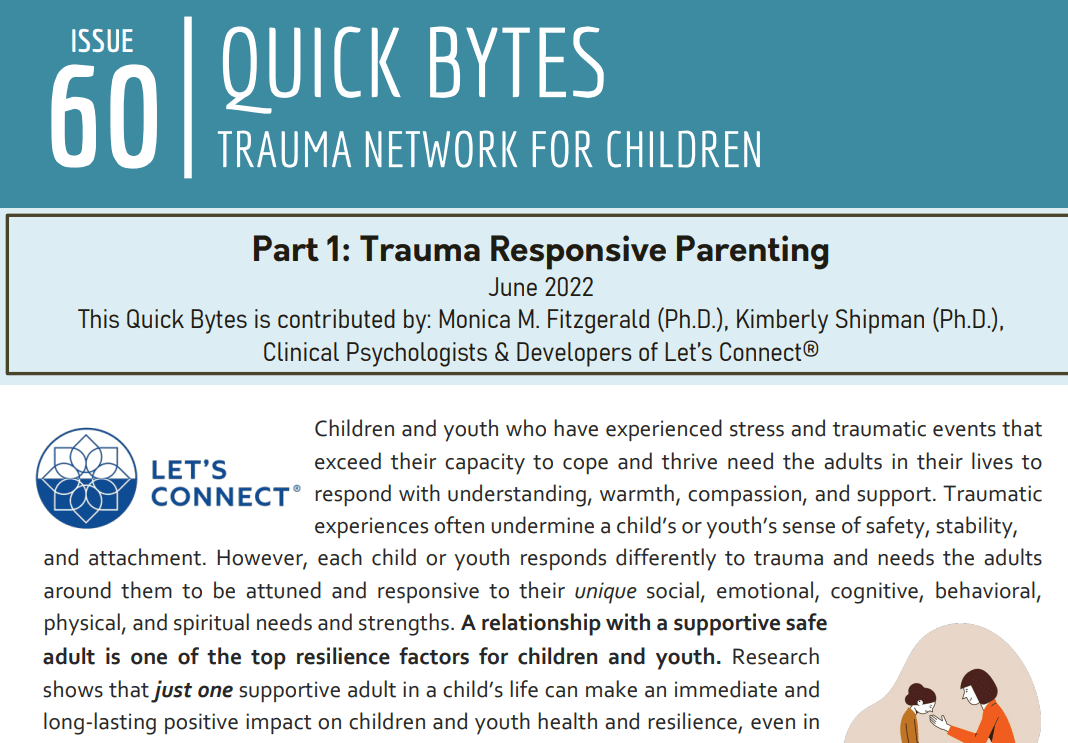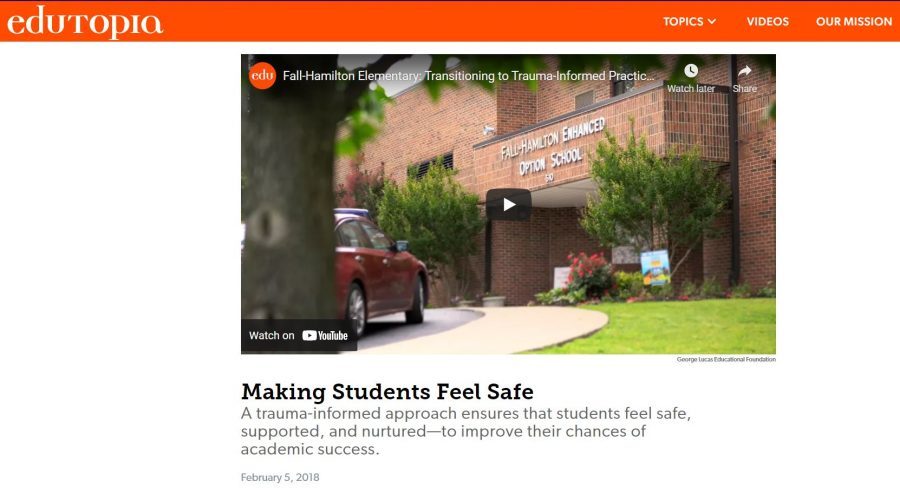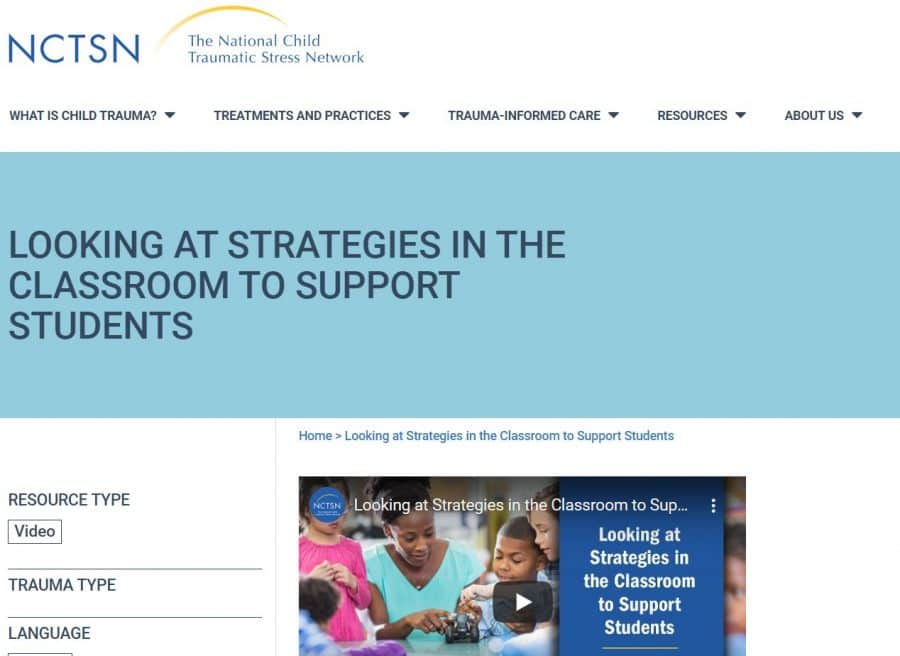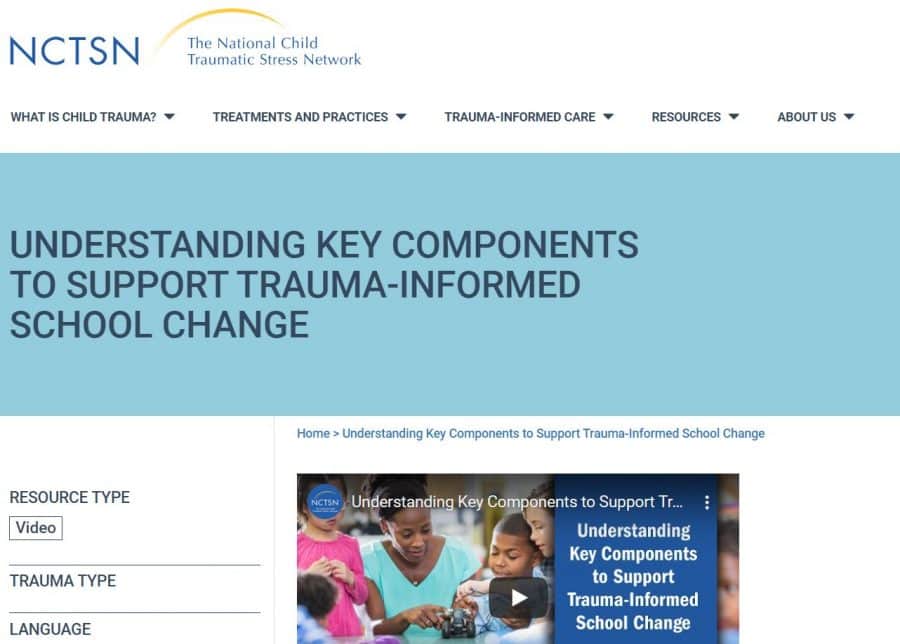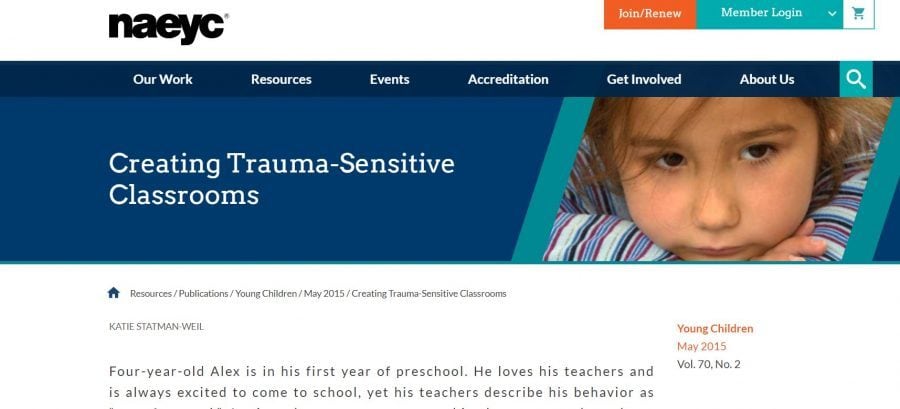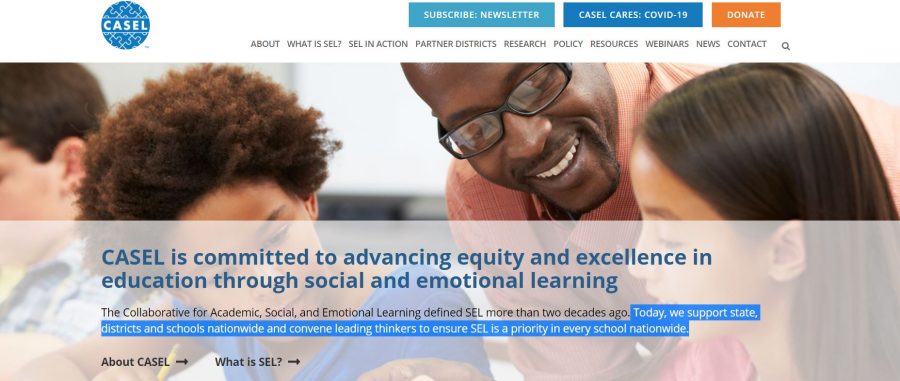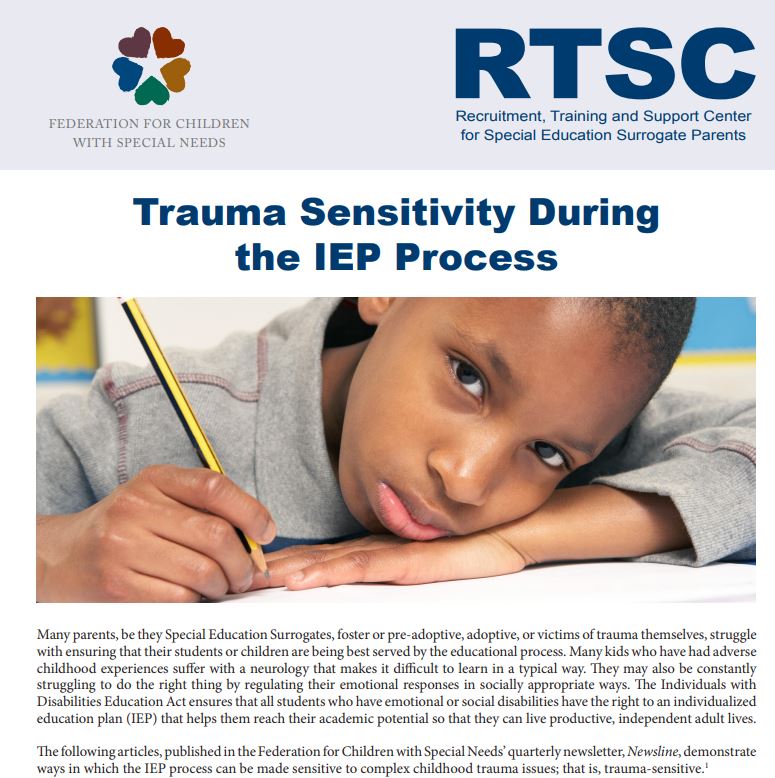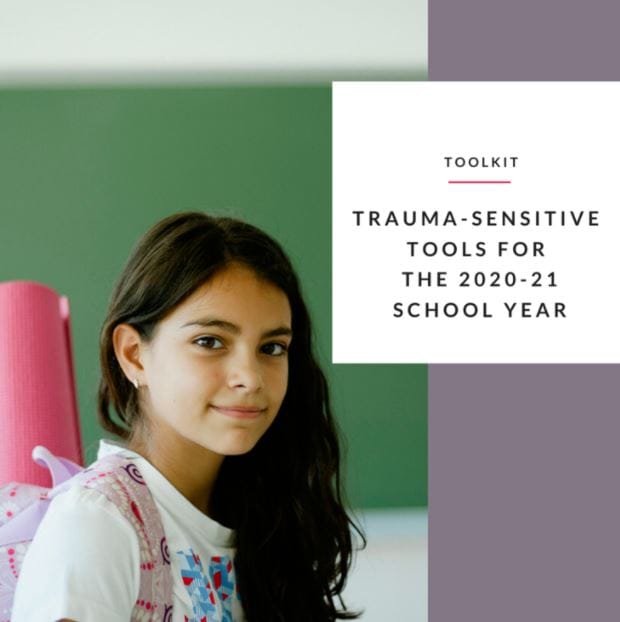This tip-sheet, was created in partnership with our colleagues at The Trauma Network for Children Program in Singapore. It highlights Let's Connect communication and relationship strategies.
Resource Types
Resource Topic
This video from Edutopia highlights keys of a trauma-informed approach that ensures that students feel safe, supported, and nurtured—to improve their chances of academic success.
This video from the National Child Traumatic Stress Network shares principles and examples of creating meaningful changes in the classroom that form an environment where children feel safe and willing to take risks. This video highlights successful efforts such as Morning and Threshold Greetings to welcome students, Calm Corners, and an approach to identify and support academically at-risk students.
This video from the National Child Traumatic Stress Network highlights useful strategies for and classroom examples of relationship-building and its positive impact on trauma-informed practice change in schools. In this video, teachers share guidance on practicing empathy, patience, and engagement to build trust and strengthen relationships with their students and create and affirm psychological safety in their classrooms.
This video from the National Child Traumatic Stress Network highlights the principles of the Breakthrough Series Collaborative methodology that support changes in schools, including involvement from stakeholders at multiple levels and a process of testing and adapting small changes to bring about sustainable and meaningful shifts in culture. This video also highlights key approaches such as developing administrative buy-in, engaging stakeholders (students, families, staff, and communities) at all levels, and utilizing a whole-school approach to meet the needs of all children, including those impacted by trauma.
This video from the National Child Traumatic Stress Network explains important activities for creating sustainable change in schools, including using school peers to discuss students and trauma-informed changes, sharing ideas with peers at other schools, developing collaboration with district leadership, administration, and parents; increasing family engagement; and raising awareness of key issues such as disciplinary disproportionality.
A resource from the National Association for the Education of Young Children that highlights critical practices for trauma informed education of young children.
Paper Tigers follows a year in the life of an alternative high school that has radically changed its approach to disciplining its students, becoming a promising model for how to break the cycles of poverty, violence and disease that affect families.
CASEL's website that includes information for educators, professionals and family members on social-emotional learning.
Guidance from the Colorado Department of Education for Schools regarding COVID-19.
A guide for making the IEP process trauma sensitive, created by the Federation for Children With Special Needs.
A resource guide for trauma sensitive schools from Yoga Ed.


